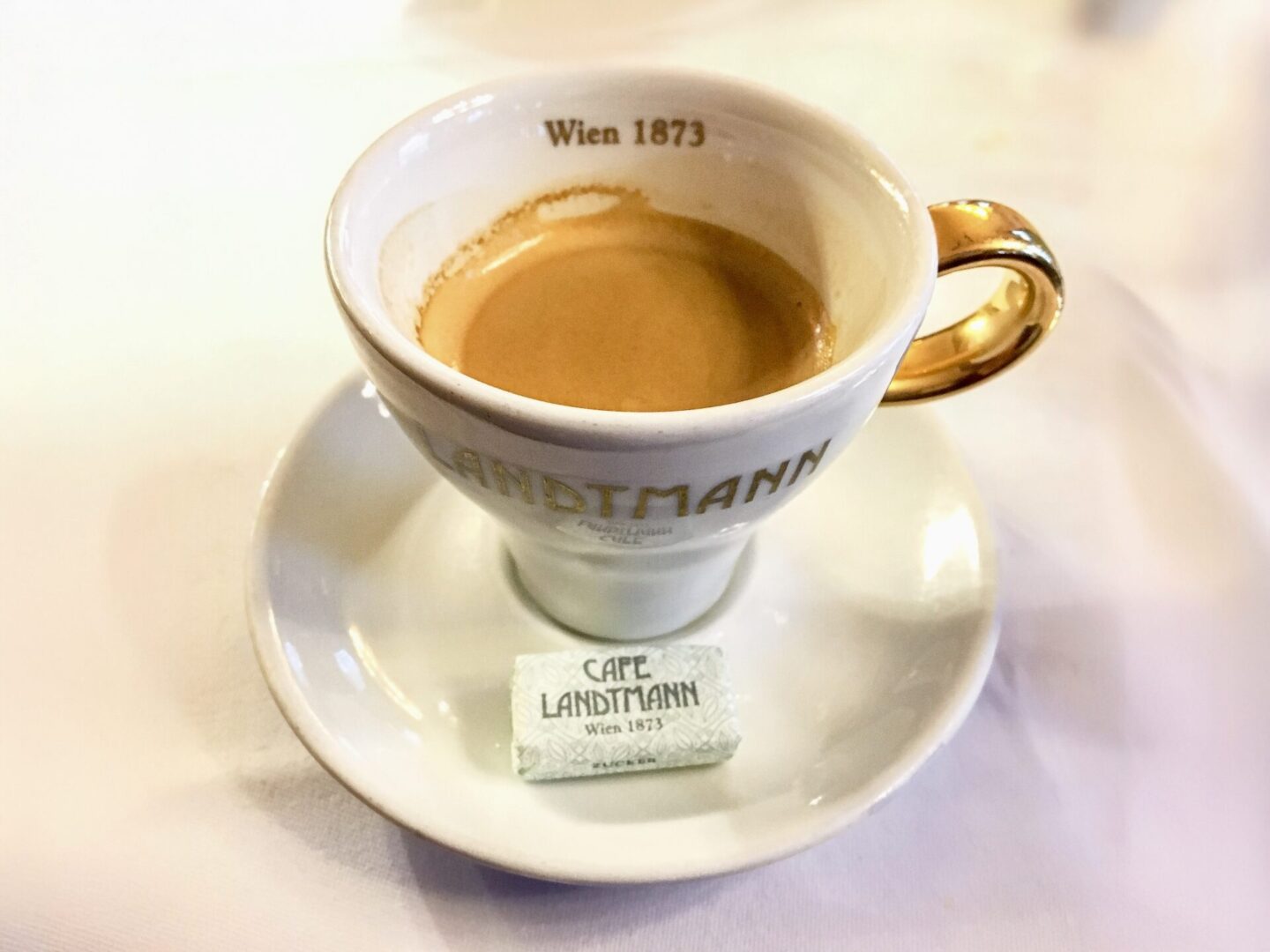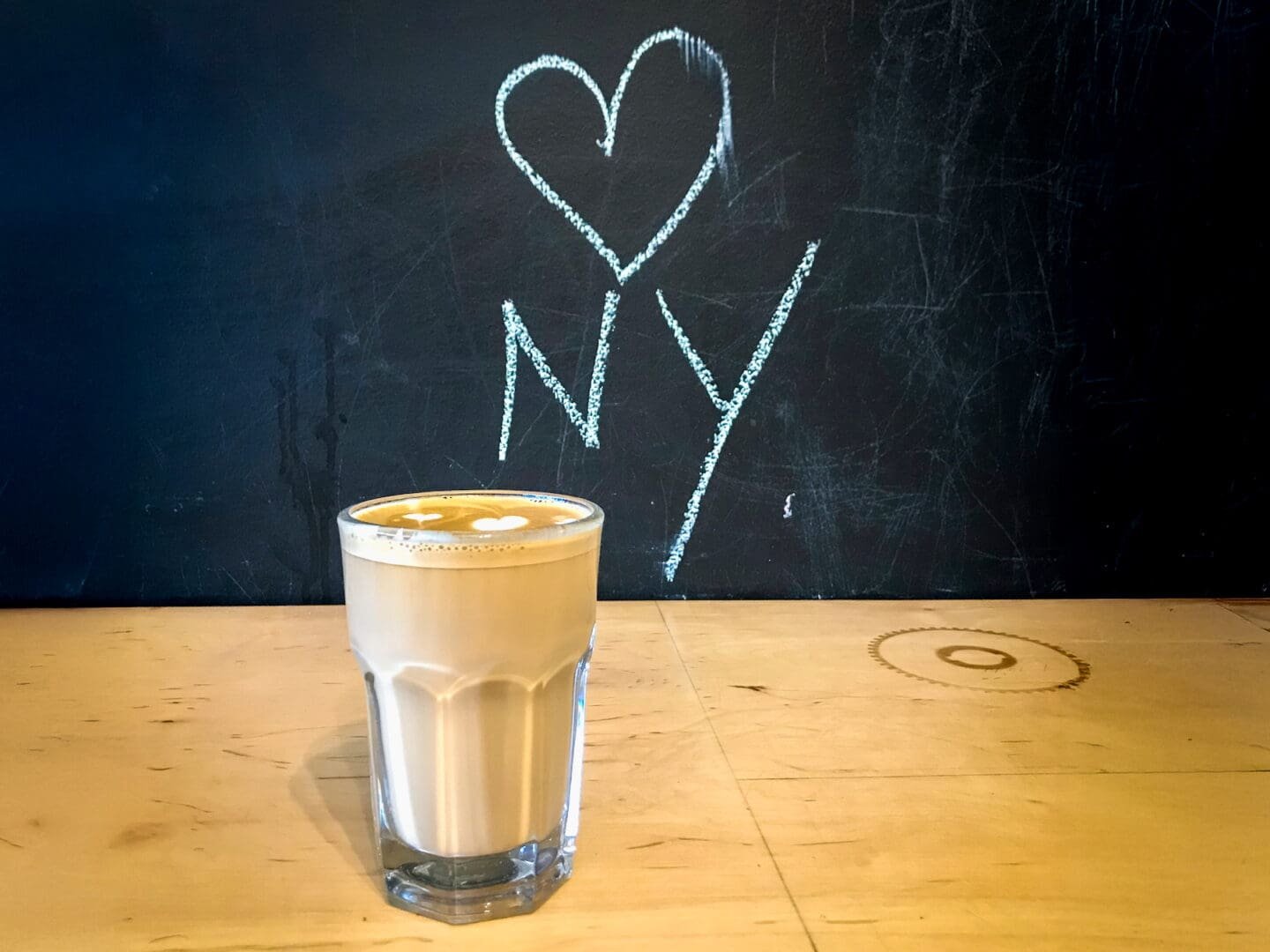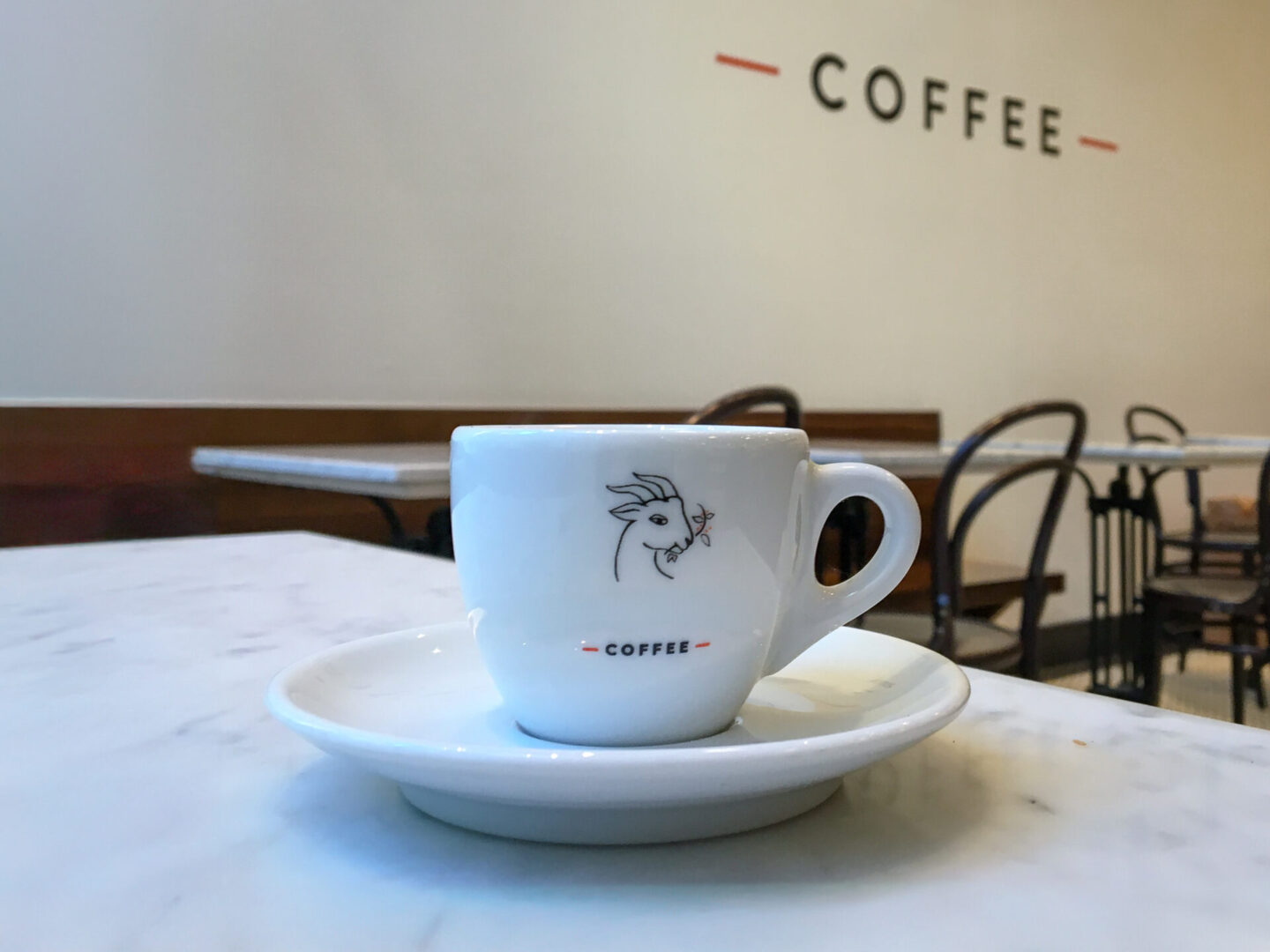
What is Third Wave Coffee? What’s it all about? Well, the short and simple answer is:
Third Wave Coffee is all about the CRAFT of specialty coffee.
Craft in the coffee cup and in the cafe. Craft in the coffee culture and community. And also, craft in the coffee journey – globally and locally.
Paul Kostadimas, Co-Founder and Visual Director of Spotlight Sojourns, is also known as Mr. Coffee Diaries Global.
He fields a lot of questions on coffee, coffee, and more coffee: Coffee history. Traditional coffee versus specialty coffee. Different coffee waves. Coffee shops, culture, and community. around the world.
Paul believes the best way to understand the why, the how, and the what of something is through its roots. Once a historian, of course, always a historian.
So, pour yourself a favorite cup of coffee or tea. Settle into a comfy seat. And let’s dive into a caffeinated conversation with Paul.
Ready? Let’s go!
- Coffee Origins: A Quick Sip of Coffee History
- What is First Wave Coffee?
- What is Second Wave Coffee?
- What is Third Wave Coffee?
- What is Fourth Wave Coffee?
- What is a Third Wave Coffee Shop?
- Coffee Journey: Single Origin Coffees
- Coffee Journey: Global and Local Experiences
- Map of Single-Origin Coffee Countries
- Coffee Resources and Recommended Reading
- Check Out More Recommendations
- Coffee FAQs
When you book or purchase through some links, Spotlight Sojourns may earn a small commission at no extra cost to you. Thanks for using our affiliate links!
Coffee Origins: A Quick Sip of Coffee History
To begin with, popular myths and centuries-old legends trace coffee origins to the 9th century AD.
Coffee mythology typically attributes the discovery of coffee to the ancient land of Ethiopia. The legendary story generally goes something like this:
One day, a shepherd named Kaldi noticed his hungry goats became quite enthusiastic and energetic after eating berries from certain trees.
The “dancing goats” in the forest apparently appreciated the stimulating effects of caffeine. Intrigued, Kaldi tried the berries from the coffee trees. He then began to spread the happy news.
From Ethiopia, coffee beans and coffee roasting spread throughout the Red Sea area, then across Africa and Arabia, and finally to Europe.
Whether coffee was roasted and served in Africa, Asia, or Europe, coffee remained essentially a luxury and a novelty reserved primarily for the wealthy and the elite.
Until that is, the 20th century.
What is First Wave Coffee?
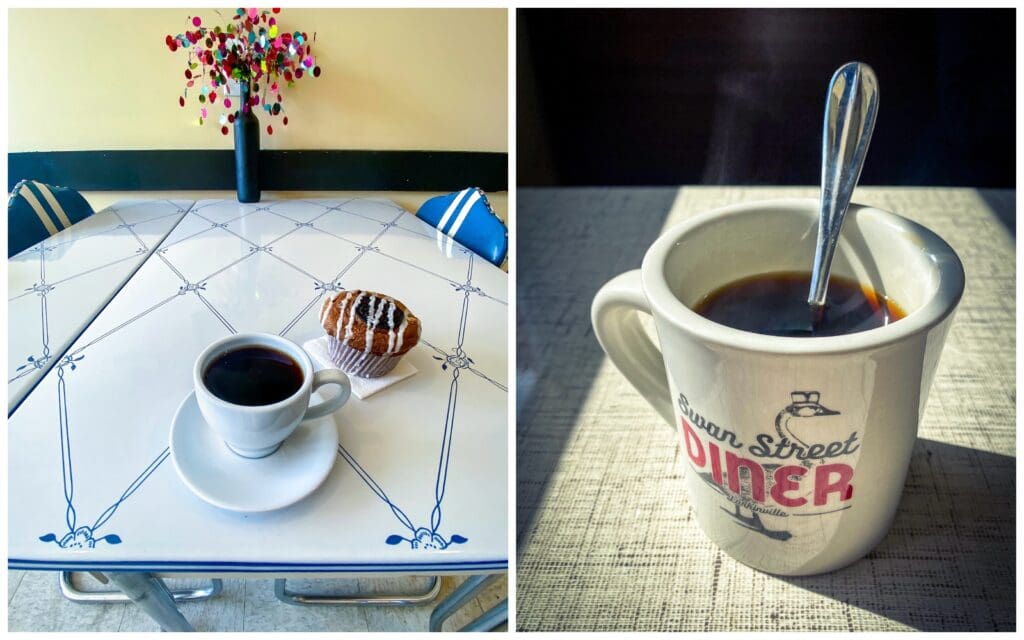
In the mid-20th century, circumstances changed, and innovations arose to make coffee more affordable, accessible, and available.
The term “First Wave Coffee” thus refers to the mainstream popularity of ground coffee and instant coffee across the United States and Canada.
Popular Coffee, the First Wave
Advances in freeze-dried coffee production and packaging techniques led to widespread availability.
Additionally, the invention of the drip coffeemaker put the easy immediacy of drip coffee in households, offices, restaurants, and businesses everywhere.
Together with appealing marketing campaigns and irresistibly catchy jingles, this created immense demand for instant coffee and ground coffee.
Three coffee companies, each established in the 19th century, led the First Wave Coffee industry. Today, all remain in business as part of multinational corporations:
- Folger’s Coffee, now known as Folgers (no apostrophe), helped “fuel” the 1850s Gold Rush in San Francisco, California.
- Maxwell House Coffee began making special coffee blends in 1892 in Nashville, Tennessee.
- NestlÃé began in the 1860s in Switzerland. In the 1940s, American soldiers serving in Europe developed a thirst for Nestle Coffee, the world-famous instant coffee NescafÃé.
Although the first wave of coffee tasted bitter generally, its popularity and mass production grew exponentially.
Because of First Wave Coffee, coffee became more affordable, consistent in taste, and eventually available to everyone, everywhere.
First Wave Coffee Theme Song
“The Best Part of Waking Up is Folgers in Your Cup”
What is Second Wave Coffee?
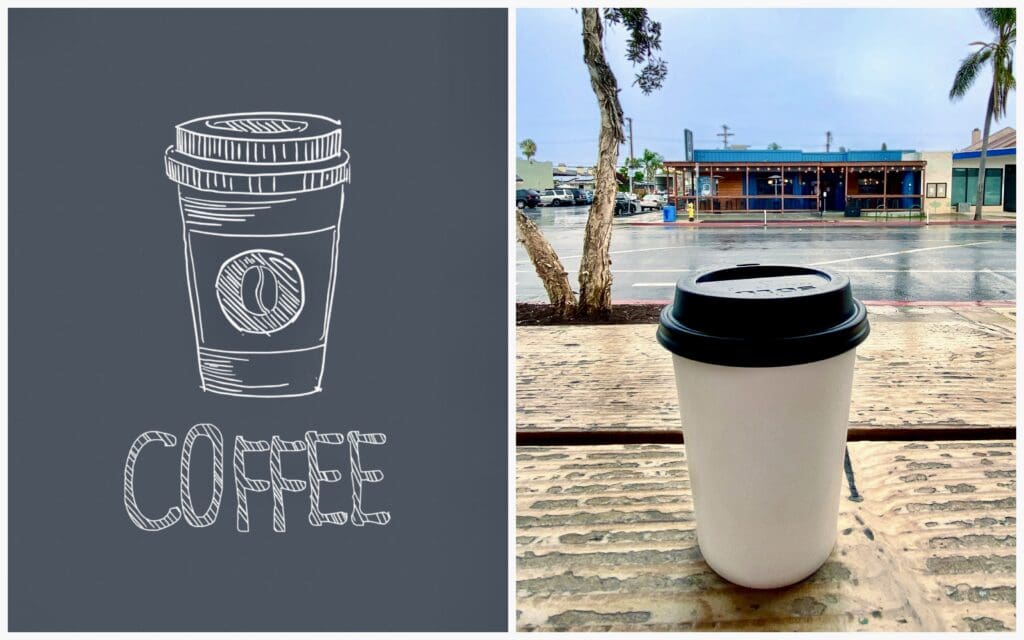
The term “Second Wave Coffee” refers to the rise of specialty coffee, as well as a new lingo and a new place to learn and linger over specialty coffee.
By delivering freshly roasted, better tasting, and higher quality coffee than the First Wave, Second Wave Coffee companies transformed the coffee experience. And also the coffee shop environment.
Specialty Coffee, the Second Wave
Second Wave Coffee emerged in the United States from two rising stars on the West Coast and Pacific Northwest:
- Starting in the 1960s, Peet’s Coffee began roasting coffee beans in Berkeley, California.
- Following in the early 1970s, Starbucks originally opened as a coffee roaster and later as a coffee shop in Seattle, Washington.
These coffee businesses placed emphasis on educating the public about coffee bean origins, roasting techniques, and espresso-based drinks.
Second Wave Coffee not only elevated the conversation about higher-quality coffee beverages but also expanded the language itself.
New words such as “espresso,” “macchiato,” and “barista” entered the lexicon to describe the specialty coffee industry and the Second Wave scene.
Today, decades later, specialty coffee still increases in demand across North America and around the world.
A New Place for Second Wave Coffee
These new Second Wave Coffee companies further created a new place for community:
- Not the first place, which is home.
- Nor the second place – that’s the office.
- Instead, the third place is a cafe or coffee shop, a comfortable space to hang out with friends. Or work on your laptop. Over a good cup of coffee, of course.
Visit Two Iconic Second Wave Coffee Shops
Starbucks’ first location as a roastery was demolished decades ago. But Starbucks’ second location, its original store in historic Pike Place Market, always bustles with business.
Considered to be the iconic first of Second Wave shops, Starbucks’ first store is a popular pilgrimage for coffee lovers.
Address: Starbucks Original Store | 1912 Pike Place Market | Seattle, WA 98101
The Second Wave coffeehouse scene reached its zenith in the mid-1990s. It’s cemented in popular culture by The Central Perk coffee shop on NBC’s hit show, Friends.
In Southern California, fans of Friends enjoy an authentic one-of-a-kind experience: a guided tour at Warner Brothers Studio Hollywood.
Warners Brothers Studio Hollywood is a real-life working studio for major films and television production. So, it’s fun and fascinating to go behind the scenes. Candidly speaking, we found our visit to Warner Bros. to be one of the best things to do in Hollywood.
The guided tour itinerary includes soundstages, backlots, and sets from blockbuster movies and TV shows. Friends highlights like the Central Park fountain and the actual Central Perk stage set surely are showstoppers.
Second Wave Coffee Theme Song
“I’ll Be There for You” by The Rembrandts
What is Third Wave Coffee?
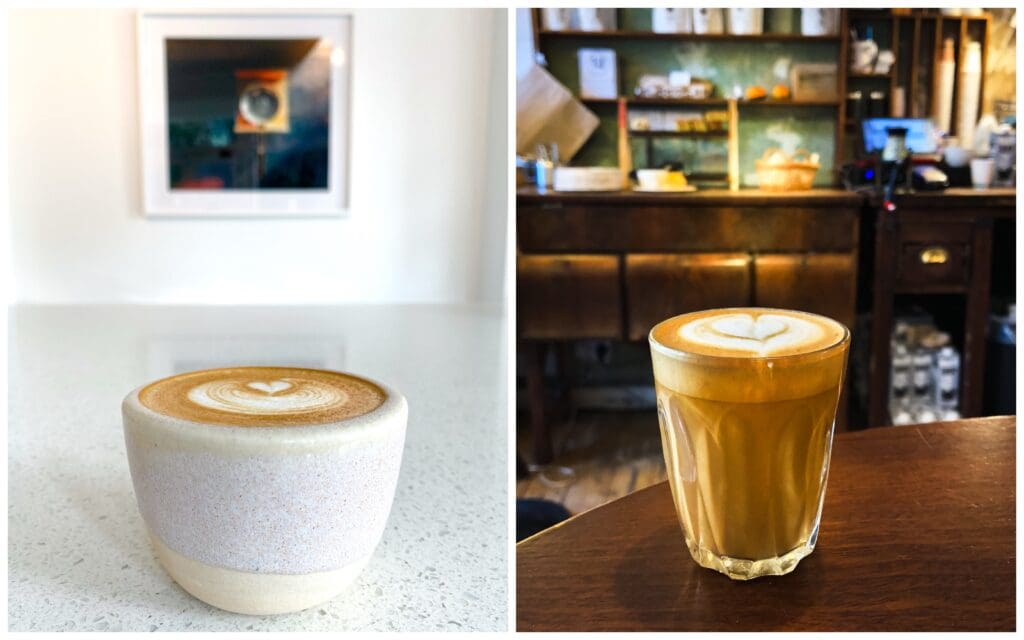
The phrase “Third Wave Coffee” refers to an artisanal coffee experience, similarly akin to the craft beer movement.
General awareness of Third Wave Coffee began in earnest during the early 2000s. That’s when coffee beans appeared on supermarket and grocery store shelves.
The coffee bags also began to display the roast date for coffee beans’ highest quality, optimal freshness, and maximum enjoyment.
Craft Coffee, the Third Wave
Third Wave Coffee focuses on high-quality coffee through sustainable production, careful roasting, distinctive taste, and overall artisanal experience. In short, craft and craftsmanship.
This third wave of coffee continues to curate the Second Wave’s attention to details and nuances, e.g., with water.
Water purity, clarity, and temperature – filtered water vs distilled water, hot water versus cold water, etc. – becomes a key point of consideration and discussion.
Four coffee roasters, in particular, receive recognition as catalysts in launching artisanal coffee and leading the way in this bold new coffee era:
- Intelligentsia Coffee and Tea launched in 1995 in Chicago, Illinois.
- Counter Culture Coffee also opened in 1995 in Durham, North Carolina.
- Stumptown Coffee Roasters started in 1999 in Portland, Oregon.
- Blue Bottle Coffee opened its first coffee shop in 2007 in Oakland, California.
However, the artisanal coffee experience neither was nor is limited to North America. Craft and the specialty coffee journey certainly encompass the entire globe.
Indeed, credit for the phrase “Third Wave Coffee” goes to international coffee expert Trish Rothgeb. She coined the term in 2002 – in Oslo, Norway.
Visit an Iconic Third Wave Coffee Shop
In 2011, Trish Rothgeb co-founded Wrecking Ball Coffee Roasters in San Francisco, California.
Wrecking Ball Coffee ranks among the best Third Wave Coffee shops in this urban hotbed of Third Wave Coffee culture.
Wrecking Ball Coffee still remains independently owned by Trish Rothgeb.
In an upscale neighborhood renowned for classic Victorian architecture, the Union Street cafe is a favorite for its clean-lined interior and full-service specialty coffee, tea, and matcha.
Not surprisingly, it’s one of our favorites, too.
Address: Wrecking Ball Coffee | 2271 Union Street | San Francisco, CA 94123
3rd Wave Coffee Theme Song
“Falling in Love at a Coffee Shop” by Landon Pigg
What is Fourth Wave Coffee?
Today, Third Wave coffee companies offer wonderful, welcoming, and well-designed places to sip and savor the experience.
Now, however, there’s a new location – some may say it’s the perfect spot – to order and enjoy the best Third Wave Coffee, as well as excellent espresso and specialty coffee.
The term “Fourth Wave Coffee” arguably refers to this new location.
Craft Coffee at Home, the Fourth Wave
As the clichÃé says, what goes around, comes around. Well, this new location brings us back to the place where First Wave Coffee began: At home.
In fact, some coffee professionals consider this at-home capability, newly enhanced and notably elevated, to be the next wave of coffee: Fourth Wave Coffee.
In the Fourth Wave scenario, coffee companies now ship the highest-quality coffee beans and equipment directly to coffee aficionados.
Thanks to convenient online coffee subscriptions, you can order, receive, grind, brew, and drink the best Third Wave Coffee in your own home.
From traditional French press to next-level drip coffeemakers, from classic Bialetti Moka Express stovetop pots to professional-caliber espresso machines for espresso-based drinks – yes, all the coffee gear is available to craft great coffee.
In another Fourth Wave Coffee twist on a First Wave Coffee tradition, Blue Bottle Coffee even makes a best-selling craft instant coffee subscription.
Now you can create your own artisanal experience. And hone your own craft of specialty coffee. All in the comfort of your own place.
Fourth Wave Coffee Theme Song
“This Must Be the Place (Naive Melody)” by the Talking Heads
What is a Third Wave Coffee Shop?
Individual Design

Many Third Wave Coffee shops approach interior design with a view to individual expression and local connections. They frequently feature local vendors and locally made items, such as cute gifts and hand-made cards, in their retail sections.
Even big Third Wave coffee brands with multiple locations following corporate design guidelines often reflect the specific vibe of their local neighborhoods.
So there’s an undeniable exuberance and a wide array of coffee shop interiors. Because Third Wave Coffee shops tend to be as unique and eclectic as their unique and independent owners.
Whether the interior design evokes an elegant library ambiance, rustic country charm, artistic whimsy, or industrial chic, you can find a style, a mood, and a vibe in Third Wave shops.
Coffee Journey: Single Origin Coffees
From Bean to Barista
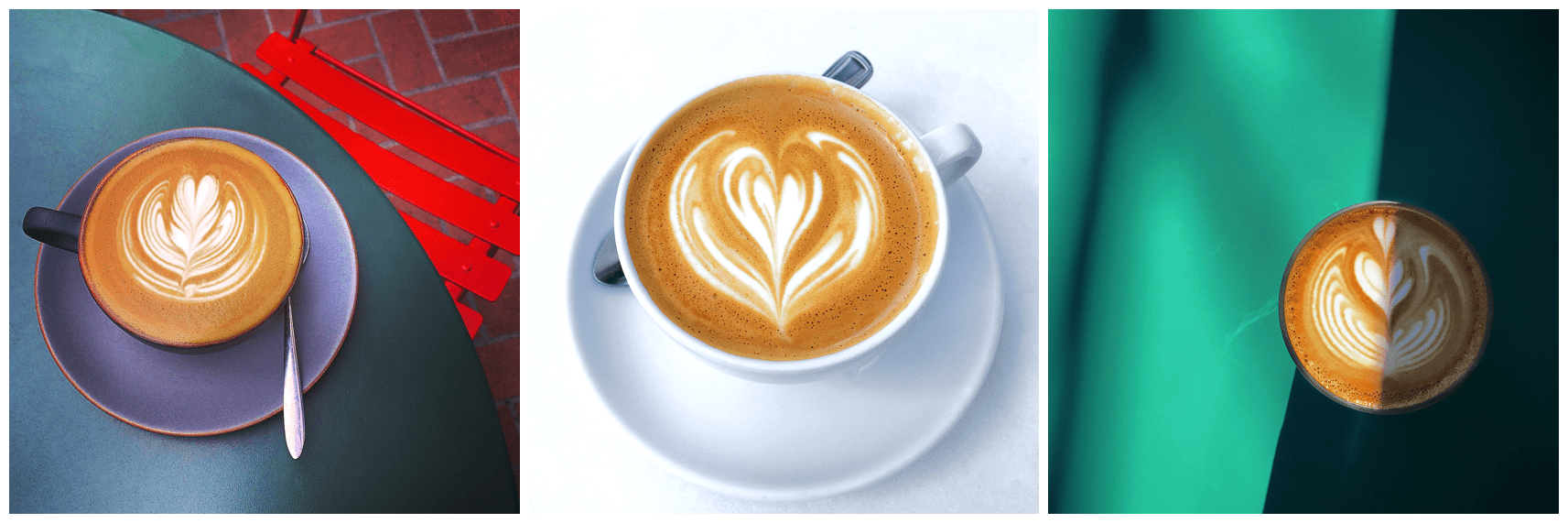
Third Wave Coffee cultivates long-standing relationships and specific sourcing of single-origin coffee beans via independent direct-trade producers.
The coffee journey from bean to barista basically travels a path like this.
Firstly, develop fair trade relationships conscientiously with local coffee farmers and related suppliers. Support these partnerships ethically. Use the sustainably sourced single-origin beans for the best coffee.
Next, roast the green coffee beans locally in small batches with the highest quality standards, seeking to achieve well-balanced light roasts, medium roasts, and dark roasts.
The results offer more refined flavors to coffee connoisseurs who enjoy the best coffee – whether it’s a dark roast coffee, medium roast coffee, or light roast coffee.
Then, educate baristas thoroughly in the diversity and variety of coffee beans, grinds, and roasts such as light roasts, medium roasts, and dark roasts.
Additionally, train baristas meticulously in brewing methods and beverages, for instance, cold brew, cortados, flat whites, and pour overs.
Lastly, present the customer’s order perhaps with a little latte art to display flair and finesse.
In sum, the coffee journey from bean to barista takes much time to build meaningful relationships, craft artisanal beverages, and create the quintessential Third Wave Coffee experience.
International Coffee Day
Yes, International Coffee Day is an actual official occasion.
In 1963, the United Nations established the International Coffee Organization (ICO), “the only intergovernmental organization for coffee, bringing together exporting and importing Governments” around the world.
The International Coffee Organization and member countries inaugurated the first official International Coffee Day on October 1, 2014.
Since then, the coffee industry worldwide annually celebrates International Coffee Day on October 1.
Each International Coffee Day starts a new coffee year and centers on a new theme. The theme’s principles guide the ICO, its members, and the coffee world during the coming year.
Events around the world, in person and online, advance serious goals for the coffee industry. And simultaneously encourage coffee-related fun for everyone.
Coffee Journey: Global and Local Experiences
Coffee Culture and Coffee Community
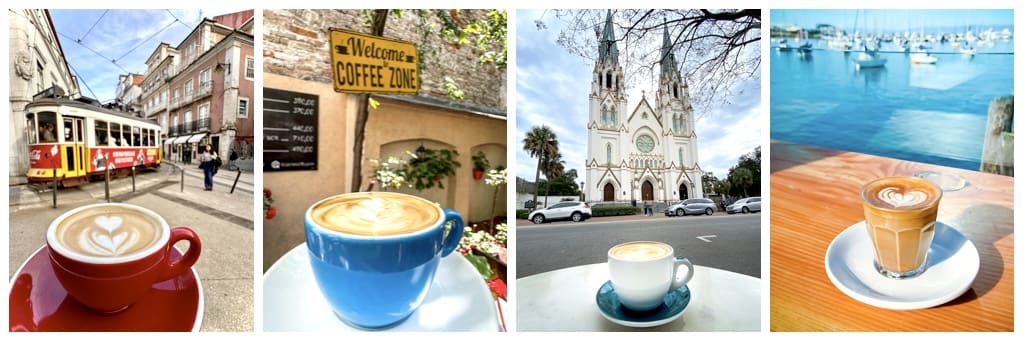
Today, Third Wave roasters and specialty coffeehouses are located around the globe – not only in major cities but also in small towns and even villages.
Even if you’re traveling to Vienna, Paris, Rome, or Lisbon – sophisticated European capitals celebrated for centuries-old traditional coffee culture – you can still find a friendly Third Wave welcome.
Wherever we travel, we make sure to explore and engage in the local coffee scene. The coffee journey plays an important part in our meaningful travel. And here’s why:
Because a coffee shop contains coffee culture and community within its four walls, welcoming familiar locals and first-time visitors alike. Its design reflects an individual aesthetic perspective. And its well-crafted work delivers jolts of delight.
When we take a seat and sip a cortado or cappuccino within those four walls, then we become part of the stories unfolding around us.
Hidden Gems
And indeed, famous corporate coffee chains notwithstanding, most coffee shops around the world are authentic hidden gems.
So even in surprisingly remote locations and unexpected destinations, you’ll discover passionate entrepreneurs committed to their craft.
When the coffeehouse is a hidden gem of quality, then we gladly support and happily share that shop with you.
Like the exceptional Third Wave Coffee shop we discovered off the beaten path in Kalamata, Greece.
This small coastal city in the Greek Peloponnese region is known globally for Kalamata olives. However, Kalamata is also home to a World Coffee Champion.
Visit an Iconic Hidden Gem in Greece
In Kalamata, Holy Mug is a tiny utopia of excellence on an otherwise ordinary street. This small cafe takes coffee to celestial heights because of owner and barista Christina Koumpouni.
She’s an icon in the small, vital, and vibrant community of Greek women coffee professionals.
At Holy Mug, Christina Koumpouni hand-crafts each immaculate cup with custom blends of Samba Coffee made exclusively for her.
And with the same impeccable skills that won the gold medal for Greece at the Specialty Coffee Association (SCA) 2009 World Coffee Championships. Along with a trophy case of other coffee awards.
Address: Holy Mug | Tsamadou 13 and Santaroza | 24100 Kalamata, Greece
In sum, Third Wave Coffee is ultimately all about the CRAFT of specialty coffee.
Craft in the coffee cup and in the cafe. Craft in the coffee culture and the community. Above all, craft in the coffee journey.
•••
Map of Single-Origin Coffee Countries
Coffee Resources and Recommended Reading
Light, Michael Paul, “Trish Rothgeb coined ‘third wave’ – and is now looking to coffee’s future.” Los Angeles Times, October 4, 2019.
Moldvaer, Anette, The Coffee Book: Barista Tips, Recipes, Beans From Around the World. DK, 2021.
Rardon, Candace Rose, Stuff Every Coffee Lover Should Know. Quirk Publishing, 2021.
Weinberg, Bennett Alan and Bealer, Bonnie K., The World of Caffeine: The Science and Culture of the World’s Most Popular Drug. Taylor & Francis, 2000.
Wild, Antony, Coffee: A Dark History. W. W. Norton & Company, Inc., 2005.
Check Out More Recommendations
GET: Now that you’ve heard the story of coffee, craft, and the specialty coffee journey, get your exclusive free storytelling guide to share your own journeys easily.
•••
Coffee FAQs
What is third wave coffee?
The term Third Wave Coffee refers to the artisanal coffee experience that began in the 1990s and early 2000s. Coffee farmers, coffee roasters, and coffee shops focus on sustainably produced, directly sourced, and carefully roasted coffee beans that make a high-quality well-crafted cup of coffee.
What is second wave coffee?
The term Second Wave Coffee refers to the specialty coffee boom that started with Peet’s Coffee and then Starbucks. Second Wave Coffee educated coffee drinkers about espresso and specialty coffee drinks. Second Wave Coffee also provided a comfortable coffee shop environment to hang out with friends.
What is first wave coffee?
The term First Wave Coffee refers to the popular coffee boom that began in the mid 20th century. Advancements in freeze-dried and packaged coffee, plus the invention of drip coffeemakers, made coffee easy to make at home.
Where are third wave coffee shops located?
Third Wave Coffee shops are located everywhere in the world – not only major cities but also in small towns and even villages. You can find a quality cup of coffee in surprisingly remote locations.
What is fourth wave coffee?
Some coffee aficionados consider the term Fourth Wave Coffee to mean the availability, capability and equipment to make craft coffee, specialty coffee, and espresso-based drinks at home thanks to online coffee gear and subscriptions.

All opinions expressed are Spotlight Sojourns’ own.
All content and images are original, created with care by yours truly, Marilee Kostadimas and Paul Kostadimas. We’re the Hidden Gemologists® of Spotlight Sojourns: Award-winning travel experts and slow travel storytellers. Because slow travel is meaningful travel, part of a meaningful life. And stories enrich the meaning.

